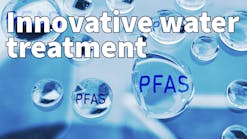The research team devised a water harvesting device based on the metal-organic framework (MOF), leveraging its capability to draw in water from the atmosphere during nighttime while condensing the absorbed water into drinkable liquid using ambient sunlight throughout the day.
MOFs refer to porous materials characterized by minuscule holes measuring 1-2 nm. High-surface-areas of MOFs function as an absorbent, capturing atmospheric water vapor.
The team’s water harvester takes the form of a cylindrical structure, unlike conventional rectangular design. This configuration ensures that the device’s surface area aligns with the trajectory of the sun, maximizing the utilization of ambient sunlight from sunrise to sunset.
The research team tested the harvester through water collection experiments conducted in two different locations: Berkeley in June 2022 and Death Valley desert in August 2022. Death Valley desert represents one of the world’s hottest and most arid regions. With persistently elevated temperatures reaching 40℃ even at midnight, soaring to a scorching 57℃ during day, and a relative humidity below 7%, the area experiences exceptionally dry conditions.
During the experiments, the device harvested up to 285g and 210g of water per kilogram of MOF in Berkeley and Death Valley desert respectively. This represents a twofold increase in water production compared to the previous harvesters. Notably, the research team’s harvester successfully extracted water without generating any carbon footprint even in the extremely dry weather conditions including the highest temperature of 60℃ and the average night humidity of 14%. The team’s unique condenser and MOF-absorbent system, empowered the water harvesting process solely through the use of ambient sunlight, rendered additional energy sources or power supplies unnecessary.
The research holds substantial significance due to the experiments conducted in genuinely extreme environments, effectively showcasing the practicality of the technology. The ability to harvest water from atmospheric water vapor has universal applicability, offering contributions toward the realization of ethical objectives in the realms of environment and public health, thereby serving as a pivotal technology for human security.




